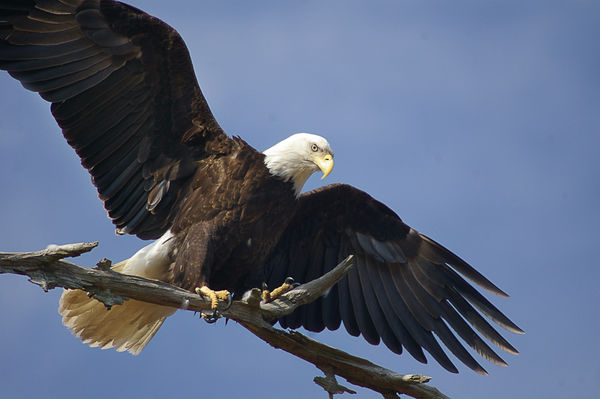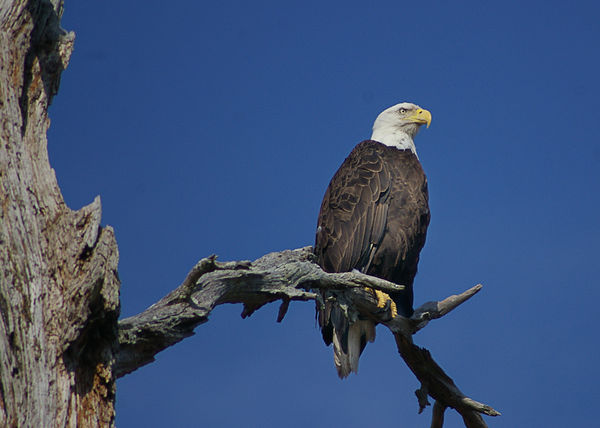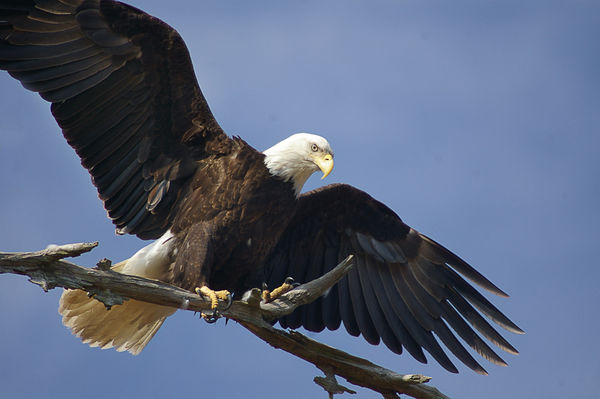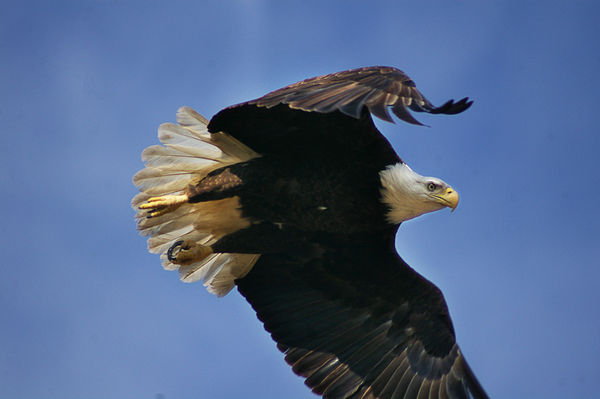Posts for: wteffey
Jan 13, 2015 07:06:40 #
I have both a 400mm and a 500mm preset lens. Both work well enough if I have time and a tripod. Neither can really be handheld even mounted on a Pentax K100d (a really old 6mp camera) with in-camera stabilization. I set the camera to "A", aperture priority, set ISO in full sun to 200-400 and let the camera set shutter speed. On cloudy days I set the ISO to 800. I shoot in RAW and pp to get the most.
Both lenses produce sharp images if I get the focus right. I have better luck near infinity where I can just back the focus off a little. The 400mm produces better images than the 500mm. I paid $.99 (99 cents) for the 500mm, and $9.00 for the 400mm on ebay, plus postage.
I have posted images from both on this site.
Both lenses produce sharp images if I get the focus right. I have better luck near infinity where I can just back the focus off a little. The 400mm produces better images than the 500mm. I paid $.99 (99 cents) for the 500mm, and $9.00 for the 400mm on ebay, plus postage.
I have posted images from both on this site.



Jan 2, 2015 06:59:14 #
If you can consistently get composition, focus and timing (three things your camera can not do for you) right while shooting full manual then OK. But if setting your camera manually causes you to miss the best composition, focus and timing, then an automatic feature to lessen the workload might result in better photos.
Dec 27, 2014 08:43:37 #
Living in rural Florida with a fairly slow "high-speed" internet, backing up RAW files to a cloud would literally take forever. I use cloud for PSD and JPEG images, but have to store my RAW files locally.
Dec 27, 2014 08:39:08 #
I have a Paint horse with a large white patch "bald" face. I use center weighted "spot" focus to ensure I get the eyes sharp, and have linked the metering spot to the focus spot. With the viewfinder centered on the white area between her eyes I get one exposure, say f8. Moving the center off to either side when her darker hair resides gives me another exposure, say f5.6. So yes, spot metering can give you different exposures if you move the center even slightly.
Dec 22, 2014 08:51:56 #
Lot's of sniffling RAW snobs here. Truthfully, I have found that JEPG produces fine results in the vast majority of cases. Only when I face questionable lighting or color conditions, or when the shot is super valuable, do I switch to RAW, and even then the final results often vary little.. And I process ALL shots, JPEG or RAW, before I let anyone see them.
To make JPEG even better, I shoot most often in "P", with all factory presets reduced one or even two clicks. This prevents in camera overprocessing, and allows me little more latitude in postprocessing if needed.
To make JPEG even better, I shoot most often in "P", with all factory presets reduced one or even two clicks. This prevents in camera overprocessing, and allows me little more latitude in postprocessing if needed.
Dec 21, 2014 11:39:18 #
For those who think bird photography, including birds in flight, require the latest and greatest equipment, I submit the following three images. While not National Geographic quality by a long shot, these three are not bad, especially considering they were taken with my "barn rig", a circa 2003 Pentax 6mp K100d with more than 35k clicks, and a Quantaray 400mm preset bought from Ebay for $.99 plus postage. I use AV mode, with the lens wide open at f6.3, letting the camera set ISO and shutter. If the light is dim I raise the ISO from 200-400 to 800, but other than that, just fire away. Good focus is sometimes an issue, especially in flight, but the camera still gives me a focus confirmation beep, and of course the Pentax has IS with any lens.



Dec 20, 2014 07:47:22 #
I have found that I rarely have to apply corrections to an entire image. Usually only relatively small portions require adjustments, while other portions are already perfect, or require different adjustments. Layers, in PSE is the way I learned to adjust only selected parts of an image. When the entire image does require an adjustment I work on a new or duplicate layer, and can blend it in if too strong, or even delete it if I don't like the result. If I had to have only one program it would be Elements.
Dec 6, 2014 08:53:21 #
Having spent much time photographing horses working in a covered arena, I suggest you invest in the most powerful external flash you can find, regardless of which camera you finally select. With bright light coming in from open sides, without flash all you will get are shadows. The built in flash will not be powerful enough. You will not have to spend much money as good used flashes are available on ebay. If your budget is small, the old Vivitar 283/285's are very powerful, work well enough manually, and the voltage is low. Practice before trying anything important.
Nov 27, 2014 18:11:28 #
On Pentax at least, "P" is NOT the same as "AUTO". I use "P" a lot to limit auto ISO to 200-400, and change metering and focus points to spot. Full AUTO is sometimes useful for landscapes and flash, but little else. I will use RAW before I use full manual
Nov 27, 2014 11:40:51 #
What I tried to relate, but with a lot fewer words
Nov 27, 2014 08:48:10 #
My three top priorities are: composition, focus and timing. Unless I am shooting still life and maybe landscapes, I find that I have enough to think about without performing mental mathematical calculations. I establish acceptable ranges for ISO, aperture and shutter based on current conditions, and as long as the camera wants to stay within those ranges I concentrate on my personal big three. After an insurance shot or two I might go back and try to fine tune some settingsmanually, but rarely does this improve the final result.
Nov 24, 2014 08:20:25 #
I have a good quality 50mm lens and have found that when I get close enough to fill the viewfinder I have also gotten so close that I interfere with the spontaneous activity that I am attempting to photograph. Children and other small animals stop what ever cute thing they are doing to watch me, and often don't resume the cute activity until I leave. When close enough for a portrait there is visible facial distortion (a big nose). Using a 50mm lens with a tripod is not fun, and out of the question in a busy environment. Chasing a four year old to stay close is a lot of exercise, and they always have more energy than I. Using a 50mm lens on 42nd Street in NYC might be ok because your personal space is measure in inches, but in a park where the child might be 50 feet away in seconds is another matter. I would suggest a zoom reaching at least 70mm, or better yet, 100mm or greater. Learn to use an external flash with bounce head if the light is too low.
Nov 22, 2014 17:28:02 #
I found that the ROK's (marines from the Republic of Korea) could get us almost anything REALLY cheap, but we had to be careful what we asked for. The ROK's seemed to be only thing the bad guys were really scared of. I still use a 500mm Spiratone manual lens from time to time that I bought for about $8.00 at the BX (Airforce) Also 48 years with USAA
Nov 5, 2014 06:59:28 #
To answer your specific question, yes, auto with flash will give you the best results without special equipment or skills. Outdoors I use a variety of manual adjustments, but indoors I just trust Auto. If the colors are still off they can easily be corrected with almost any program, including most on-line printing sites. To those who hate on-board flash and recommend never using it, I say it is better to learn how to use it properly.
Oct 12, 2014 09:07:24 #
Your camera has numerous options that will help achieve a better exposure built in; you do not need to buy an external light meter at this time. You might, for instance, change the metering from multipoint to spot, and back again. Your camera will also bracket your shots will several different exposures, or perhaps try HDR and/or fill flash.